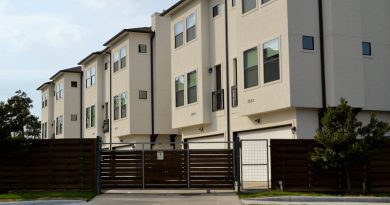Unlocking the Potential: How to Successfully Flip Rural Properties
Unlocking the Potential: How to Successfully Flip Rural Properties
Flipping real estate can be a lucrative investment strategy for those who are willing to put in the time and effort. While many people focus on flipping properties in urban or suburban areas, there is also great potential in flipping rural properties. These properties can often be purchased at a lower price point, allowing for a larger profit margin once the property is renovated and sold. However, flipping rural properties comes with its own set of challenges and considerations. Here are some tips on how to successfully flip rural properties.
1. Research the Market
Before diving into a rural property flip, it is important to thoroughly research the local market. This includes understanding the demand for housing in the area, as well as the types of properties that are most sought after. Is there a demand for vacation homes or rental properties? Are there any specific features that buyers are looking for in rural properties? Knowing the market trends will help you make informed decisions when selecting a property to flip.
2. Choose the Right Property
When it comes to flipping rural properties, it is important to choose the right property. Look for properties that are in need of renovation but have good bones. Properties with potential for expansion or improvement can also offer a higher return on investment. Consider factors such as the location, size of the property, and accessibility to amenities and services when selecting a property to flip.
3. Assess the Renovation Costs
Before purchasing a rural property to flip, it is important to assess the renovation costs. This includes not only the cost of materials and labor, but also any additional expenses such as permits, inspections, and insurance. It is important to create a detailed budget and stick to it to ensure a profitable flip. In some cases, it may be necessary to seek financing or partner with other investors to cover the renovation costs.
4. Work with Local Contractors
When flipping rural properties, it is important to work with local contractors who are familiar with the area. Local contractors will have a better understanding of the local building codes and regulations, as well as access to resources and suppliers in the area. Building relationships with reliable contractors can help ensure that the renovation process runs smoothly and stays on schedule.
5. Add Value to the Property
To maximize your profit potential when flipping rural properties, it is important to add value to the property. This can be done through renovations such as updating the kitchen and bathrooms, adding new flooring or fixtures, or creating outdoor living spaces. Consider the needs and wants of potential buyers in the area when making renovation decisions, and focus on improvements that will provide a high return on investment.
6. Market the Property Effectively
Once the renovation is complete, it is important to market the property effectively to attract potential buyers. This can include staging the property to showcase its best features, professional photography, and online listings on real estate websites. Consider hosting open houses or virtual tours to showcase the property to a wider audience. Working with a real estate agent who is familiar with the local market can also help ensure a successful sale.
Flipping rural properties can be a rewarding investment strategy for those who are willing to put in the time and effort. By researching the market, choosing the right property, assessing renovation costs, working with local contractors, adding value to the property, and marketing effectively, you can successfully flip rural properties and achieve a profitable return on investment. With careful planning and attention to detail, flipping rural properties can unlock great potential for real estate investors.






